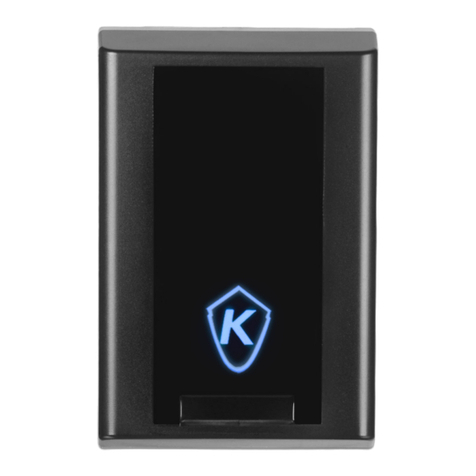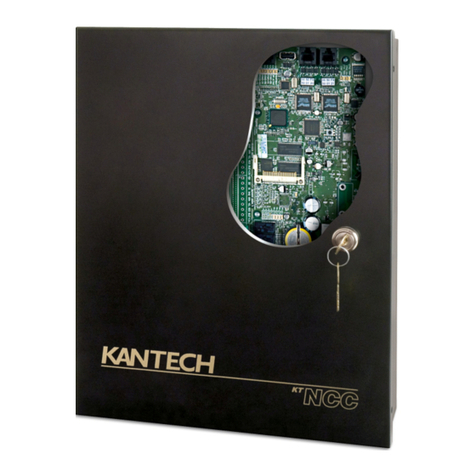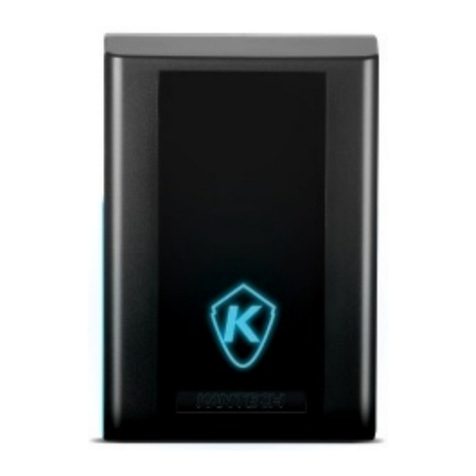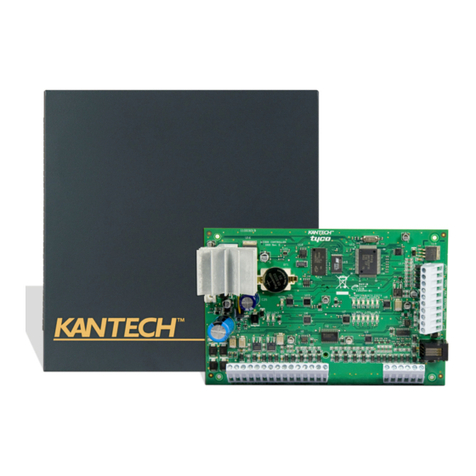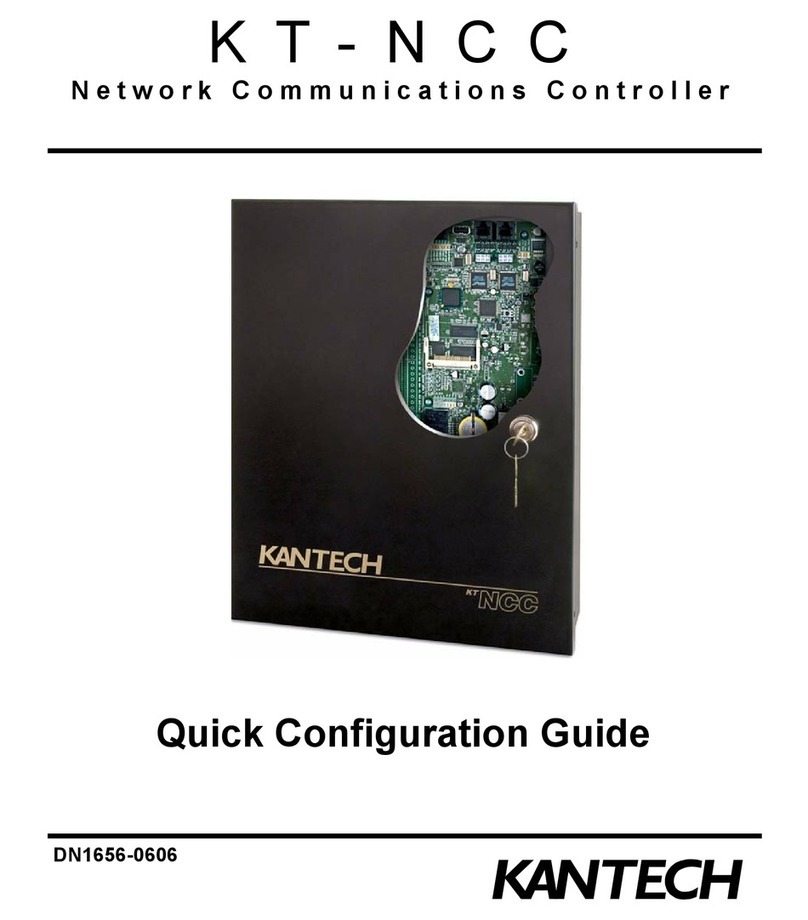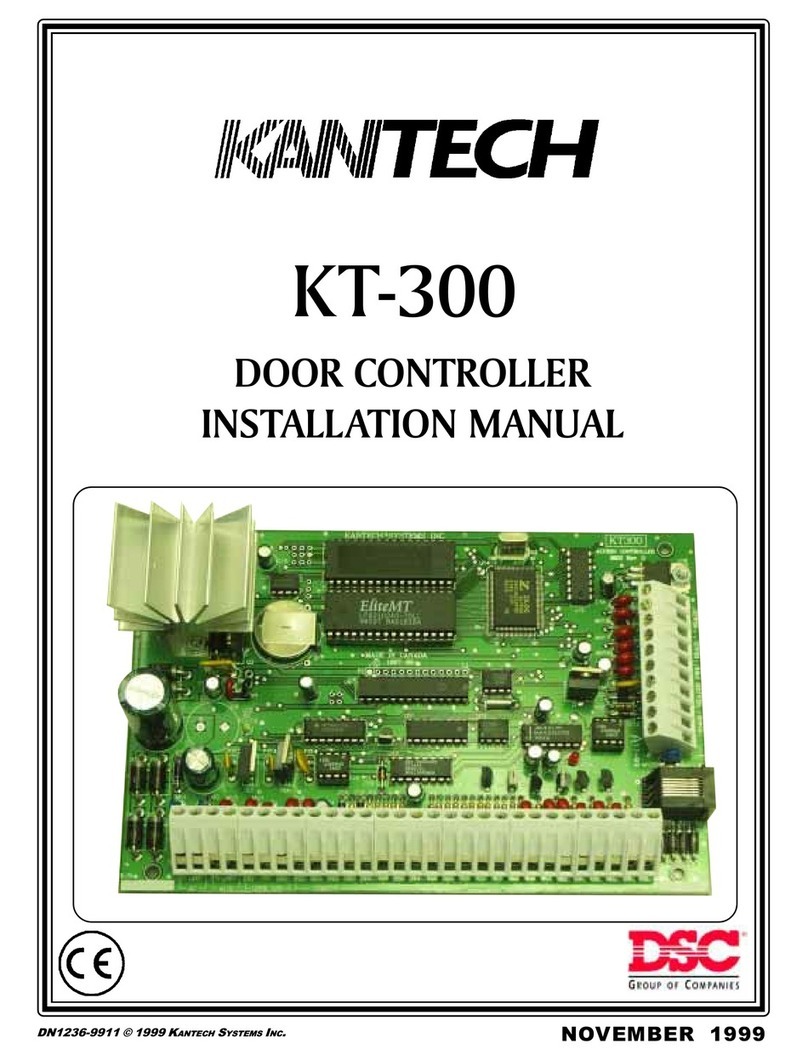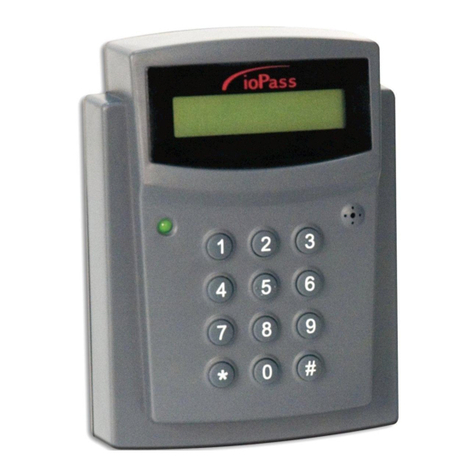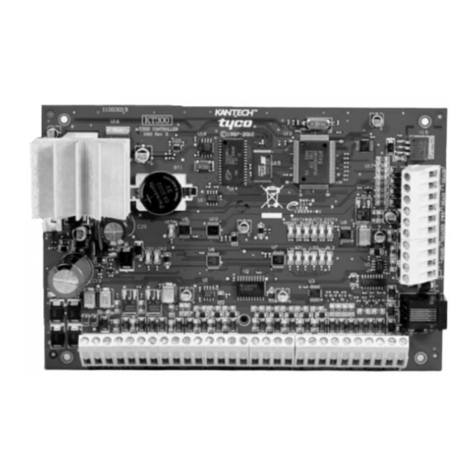
STEP BY STEP INSTALLATION
DN1315-0006 © 2000 Kantech Systems Inc. Page: 9
Step 13. Powering the KT-300
__
__
_PowertheKT-300controller
After you have completed all the necessary steps, you may power
the KT-300 controller. Connect AC power and connect the battery.
Note: The KT-300 unit will not start on battery alone.
KT-300 FCC & IC Compliance Notice
This device complies with Part 15 of the FCC rules. Operation is subject
to the following two conditions: (1) this device may not cause harmful
interference, and (2) this device must accept any interference received
including interference that may cause undesired operation. This class B
digital apparatus meets all requirements of the Canadian Interference
Causing Equipment Regulations. The KT-300 is also compliant with
EN55022: 1994, amendment 1: 1995, Class B.
KT-300 CE Compliance Notice
This equipment has been tested and found to comply with the limits to
EN 50130-4: 1995.
KT-300 UL Compliance Notice
In order to comply with UL listings, the following has to be respected:
•Use of a UL listed computer
•UseofULlistedreaders(Wiegand26and34bits,magstripe26and34
bits, have been tested and found to comply)
•Use of a tamper switch on every housing cabinet for the KT-300
•Do not use a VC-485 (not UL listed)
•Do not use the SmartLink option (has not been investigated by UL)
•Use a KT-LCD4501 module on each KT-300 controller
•Do not use a 220V transformer (not UL listed)
•Use only UL listed cables
•Use only UL listed adaptors
•Use only a UL listed transformer
Note:Backupbatteryprovidesoperationofupto12hoursbuthasbeen
tested only 4 hours as per Section 33 of UL 294, fifth edition.
Note:All circuits are power limited
Electrical Specifications
VOLTAGE OUTPUTS MAXIMUM
CURRENT
ABSOLUTE
COMBINED
MAXIMUM
Lock Outputs (12 VDC) 500 mA
(250 mA each)
1.5 A
Auxiliary Power (12 VDC) 125 mA
Reader 5 VDC and 12 VDC 175 mA
Combus 500 mA
Battery Charging (12VDC) 250 mA
OPEN COLLECTOR OUTPUTS MAXIMUM
CURRENT
LED (door 1 & 2) 25 mA (each)
Buzzer (Buz, door 1 & 2) 25 mA (each)
Controlled Relay 1 & 2 (RL1 & RL2) 25 mA (each)
Troubleshooting
Communication Problems
Default Initialization:
TheKT-300defaultinitializationisdoneatKantech.Thefollowingsteps
should only be done if :
(A) Youchangedthesoftware(e.g.:youwereusingEntraPass,theninstalled
WinPass) and there’s no communication,
(B) TheKT-300wascommunicatingviatheRS-232portandyouinstalled
a VC-485 to communicate via the RS-485 port,
(C) You were using the KT-300 at a local site and now want to configure
it for remote operation.
How to use the default initialization (hard reset):
1) Disconnect the transformer and the battery,
2) Remove all connections of DOOR1 and RL1 terminals,
3) Place a jumper between the DOOR1 and RL1 terminals,
4) Apply AC power to the transformer. The VITAL LED should flash
4 times. This means that the controller is in the initialization mode,
5) Disconnect the jumper,
6) When the controller is communicating with the PC, the VITAL LED
will flash 3 beats at a time,
7) Reconnect the battery.
KT-300 Controller Maintenance
Recommendations
ItishighlyrecommendedtotesttheKT-300controllerbyperformingthe
following tests:
1) Bi-annual test for battery:
Remove AC power from the controller and connect the battery to the
controller for one hour. This test will ensure that if a power failure
occurs,the battery will be able to support normal operations. This test
should be performed twice a year. Once the test has been performed
sucessfully, reconnect AC power to the controller.
2) Annual test for emergency lithium battery:
Measurevoltageoflithiumbatterywhenpoweristotallyremovedfrom
the controller (AC & DC power). To ensure maximum operation and
prevent loss of power, if the lithium battery voltage measures below
2.5VDC, please contact your distributor to return the KT-300 for
maintenance.

